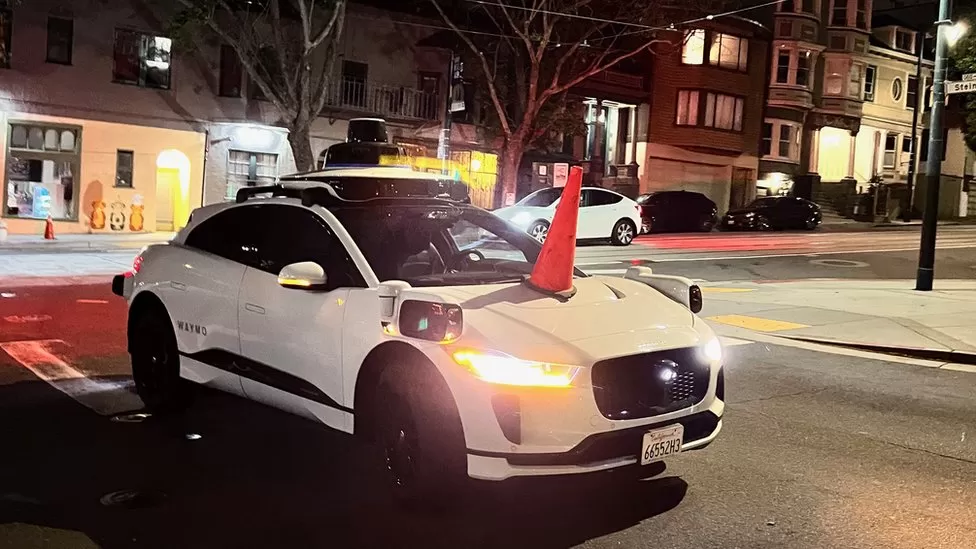How robotaxis are dividing San Francisco

The cab’s approach quickens my heartbeat just a little. In my life, I thought I would never see such a sight.
Driverless cabs are not available. My phone is all I need to unlock its door before it whisks me away into the night.
I’m about to enter when a passerby approaches.
He tells me that they are unsafe. In his words, he saw someone almost run over by a robotaxi, and warns me to be careful.
In San Francisco, he represents a faction that opposes robotaxis and believes the city has agreed to a dangerous experiment that puts lives at risk.
There are some who have gone a step further. Cones have been placed on the bonnets of cars by a campaign group over the summer to disable the vehicles.
“Coning” is what Safe Street Rebel calls what they do, and some of their videos have gone viral. The city is committed to allowing them to operate on its streets – at least for now. In August 2023, the California Public Utilities Commission (CPUC) approved the 24-hour operation of two taxi companies – Waymo and Cruise. Prior to this, paid rides could only be operated at night.
Before that vote, officials listened to six hours of public comment – a conveyor belt of hopes and concerns.
As a result, Uber and Lyft drivers were concerned robotaxis would take away their jobs: “I’m a single mother, and I’m worried about the future of my career,” said Rosine, an Uber driver in the city.
Cars often broke down and blocked garbage disposal trucks’ vehicles, according to garbage disposal truck representatives. Firefighters have criticized the cars for the same reason, claiming 55 times this year that they have been obstructed.
There are others who believe the technology simply hasn’t proven safe yet. “I’m all about technology, but this isn’t ready guys… San Franciscans are at risk.” said Matthew Sutter, a cab driver in San Francisco.
Others questioned how physically disabled people would get into taxis without a driver’s assistance. Robotaxis would leave disabled San Franciscans out in the cold, according to Mara Math, a member of the Paratransit Coordinating Council.
However, its supporters were also present. As an orthopaedic surgeon in San Francisco and a passionate cyclist, George Janku said: “I see the way these cars behave, and I trust them more than angry drivers or distracted drivers.” He explained that he had treated many serious injuries involving human drivers – and robotaxis appear safer.
Blind Jessie Wolinsky reported harassing behavior by Uber and Lyft drivers. My experience with Waymo cars has been “unparalleled in terms of safety”.
Several mothers reported that taxi drivers rejected them when they saw their children’s car seats – something a driverless vehicle would never do.
The argument has been presented from both sides to me. Cruise’s robotaxis has been used several times over the past few months without any accidents. I have also been in a robotaxi that broke down in the middle of the street at the same time.
The vehicle simply stopped when it encountered a tight right-hand turn. Behind me, cars beeped and mounted the kerb to get around us. It was understandable that they were frustrated.
An accident involving a cruise taxi and a fire engine occurred just eight days after the vote to allow companies to use robotaxis.
